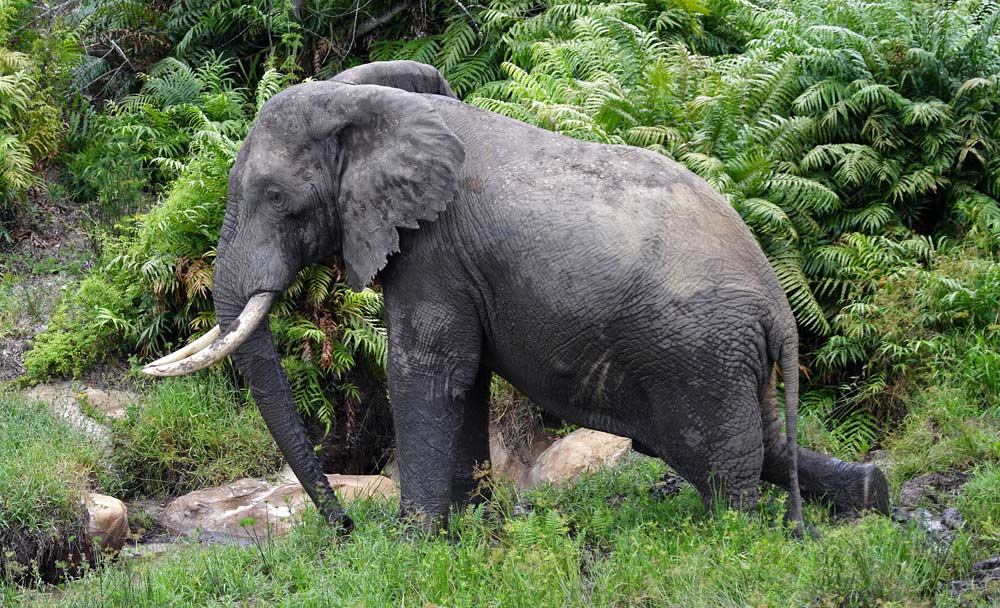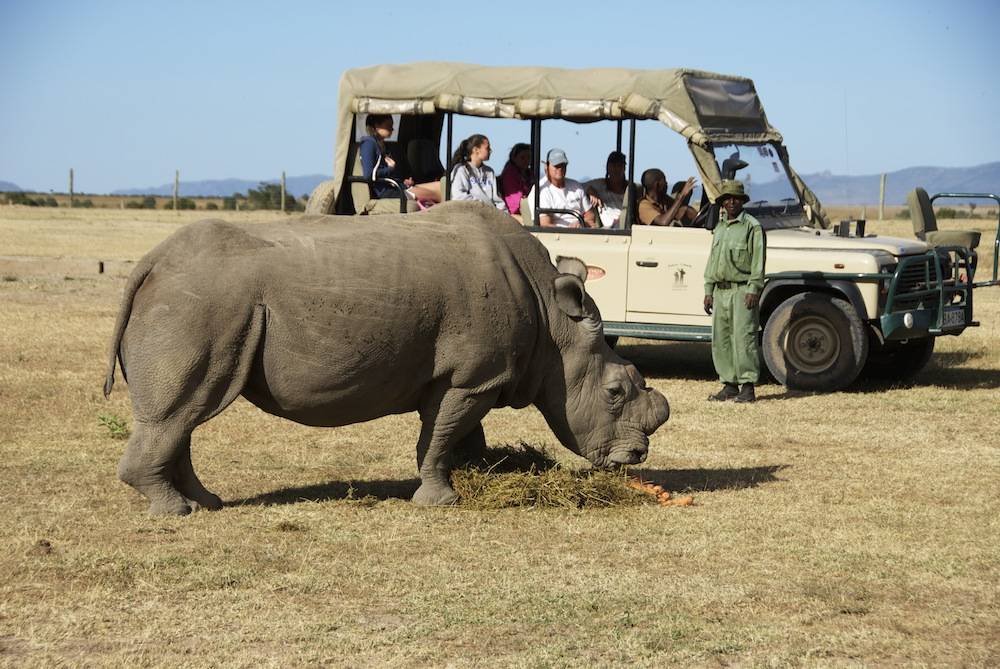Nairobi National Park is located in the heart of Nairobi, the capital metropolis of Kenya.…

Shimba Hills National Reserve
Shimba Hills National Reserve is one of the greatest forest reserves along East Africa’s coast. This is another Kenyan National Reserve that is home to a diverse range of wildlife. The reserve is more diverse in terms of flora and wildlife, having the highest concentration of Forest Elephants not just in Kenya, but across Africa. The reserve is only 33 kilometres from the Mombasa shoreline in the South. The Shimba Hills National Reserve was created in 1968 and is managed by the Kenya Wildlife Service.
The reserve is primarily composed of woods, rainforest, and grassland. It is regarded as one of the most important regions for plant biodiversity, with the Shimba Hills national reserve containing more than half of the country’s uncommon plants. There are over 159 tree species, including cycads and orchids. The reserve is home to a diverse range of bird species, including red-necked spur fowl, cisticola, Zanzibar red bishops, and others. The reserve’s most scenic areas include Sheldrick Falls and the lush Mwalugaje woodland.
Shimba Hills National Reserve is well-known for its elephant population, which numbers around 700. In the early 2000s, the elephant population became uncontrollable, prompting Kenya Wildlife Services to relocate around 150 elephants to Tsavo East National Park. This was the largest translocation in the history of the animal planet, but it was all done to lessen animal-human conflicts on the reserve.
Accessing the Park.
The Shimba Hills national reserve covers 300 square km and is accessible from Mombasa’s coastal area. The reserve is easily accessible from Diani Beach or Mombasa on a decent paved road that takes approximately an hour to drive. If one is in Nairobi, it takes 9 to 10 hours to drive down Mombasa Road, commonly known as A109.
Alternatively, you can get a daily flight from Jomo Kenyatta International Airport or Wilson Airport to Mombasa, where you will begin your one-hour journey to the Reserve. Due of the long drive, this is the most convenient option.
Attractions of Shimba National Reserve
Shimba Hills National Reserve was established as a national forest reserve in 1903 and quickly gained popularity once more grassland was added to the area in 1924. The little Shimba Hills national reserve, nestled in the equatorial forest, offers breathtaking waterfalls and vast wilderness areas. It is a well-ventilated area that provides fresh cool air following the hot temperatures of the Indian Ocean coastal tour.
The main features at the Shimba Hills National Reserve are:
Wildlife:
Shimba Hills National Reserve, known for its big elephant population, is an excellent wildlife attraction. The reserve is home to rarer wildlife such as Sable Antelope, Forest elephants, African elephants, Giraffes, Leopards, Hyenas, bush pig, buffalo, Bushbaby, Blue Duiker, Galago, and many more. All of these natural species entice travellers.

Birds:
Shimba Hills National Reserve is also home to an abundance of birdlife, with over 100 species documented. Out of the total bird species, 22 are coastal endemics, including the Ostrich Eagle, Falcon, Cuckoo, Guinea-fowl, Honeyguide, Hornbill, quail, Uluguru, and others.
Sheldrick Falls:
The 21-meter-high Sheldrick Falls is located in the middle of the Shimba Hills National Reserve. It is one of the reserve’s main attractions, named after Sheldrick, the conservationist who first discovered the falls.
Marere Dam:
The dam is an important water catchment region for wildlife; more animals can assemble here, particularly during the dry season, making it easier to view wildlife in the park.
The Elephant Hill is named after the large gathering of elephants around the hills. It is a vista that provides a close-up and aerial view of vast herds of elephants. The armed game ranger can accompany hikers up the hill.
The Shimba Hills National Reserve Kenya is home to approximately 1100 tree species, with forest covering about half of the area. Most shrub researchers visit the area only to conduct research and identify various tree species.
Activities at Shimba Hills National Reserve
Game viewing: Enjoy excellent wildlife watching with a large number of elephants in the park. You can see hyenas, giraffes, elephants, bush babies, leopards, and many more animals. The reserve is endowed with a diverse range of species, making your visit to the reserve more enjoyable and memorable. Shimba Hills National Reserve is one of the top wildlife places for game viewing, and its modest size allows for short, rewarding game drives.
Birding:
Shimba Hills National Reserve features about 200 bird species, including more than 20 endemic birds that are extremely rare. The rain forest, which is made up of several tree types, has provided ample habitat for various bird species. The mild and chilly weather have drawn more water animals to the reserve as a breeding ground. Some of the birds found on the reserve are the Zanzibar Red Bishop, Cisticola, Guinea fowl, falcons, African Hawks, Fish eagle, hornbills, kingfishers, and sunbirds, to name a few.
Hiking:
The reserve’s geography is more diverse, featuring hills and woods. Hiking is done under the supervision of the park ranger. The various hills provide excellent viewing opportunities for wildlife, particularly vast herds of elephants, as well as an aerial view of the reserve. The most noticeable hills are Shimba Hills and Elephant Hill, where tourists can walk following their wildlife drives in the reserve.
Visiting the Falls:
Nature walks are permitted, particularly the climb to the 21-meter-high stunning waterfall known as Sheldrick Falls. The falls were named after well-known conservationists in Kenya. One can enjoy sightseeing at the falls, swimming at the waterfall’s base, and other activities.
The size of Shimba Hills National Reserve Kenya does not detract from the wildlife experience because it is a home to more animals than it can support. This serves as a gateway to combination coastal tours and wildlife safaris. It is the ideal honeymoon spot for couples who want to appreciate nature in a romantic setting.



